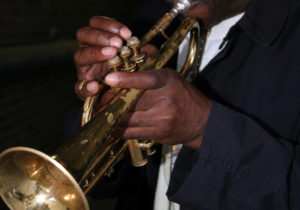 Throughout history human beings have continually made new creative actions of all kinds determining culture and science. With creativity such a common human activity, the question arises whether it is an inherent trait? In the arts, creativity is often related to spirituality. Free form music is a natural creative form used around the world, at times connecting music improvisation and spirituality.
Throughout history human beings have continually made new creative actions of all kinds determining culture and science. With creativity such a common human activity, the question arises whether it is an inherent trait? In the arts, creativity is often related to spirituality. Free form music is a natural creative form used around the world, at times connecting music improvisation and spirituality.
While it is not clear what creativity is, elements include intuition, expert knowledge, problem solving, and talent. It is not known whether creativity is the ordinary result of cognitive processes or something different.
Creativity
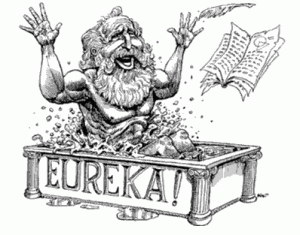 There are many different brain regions that are involved in different levels of creativity. Attempts to categorize types of creativity have included brain regions related to deliberate cognitive creativity from sustained work; deliberate emotional creativity related to emotion reaction to discovery; spontaneous cognitive creativity when after work in problem solving unconscious processes continue until a sudden understanding dawns; and spontaneous emotion such as an epiphany without warning.
There are many different brain regions that are involved in different levels of creativity. Attempts to categorize types of creativity have included brain regions related to deliberate cognitive creativity from sustained work; deliberate emotional creativity related to emotion reaction to discovery; spontaneous cognitive creativity when after work in problem solving unconscious processes continue until a sudden understanding dawns; and spontaneous emotion such as an epiphany without warning.
- Finding something after an emotional search, “aha,” is connected with positive emotion and occurs in the ventromedial prefrontal cortex, VMPFC, and memory centers, connecting to limbic emotional centers.
- When work has proceeded for a long time and then attention is turned elsewhere, the idea appears while doing something else. This “eureka” moment is related to dopamine reward centers in the basal ganglia, and automatic behavior. Another example of this might be ideas appearing in sleep and dreaming. Gaining new ideas by clearing the mind might involve sleep, dreaming, and meditation.
- An emotional “epiphany” appears in working memory and the emotional centers. It is a new perspective, a new neural structure or association.
- The “eureka” of science, the epiphany of art and memory, and the transcendent experience of spirituality may have some similarities.
- Some research relates the epiphany experience to the amygdala, and the “eureka” to basal ganglia.
Creativity and Improvisation in Live Music
A previous post has noted the value of training the brain in musical skills. It was shown that emotion is triggered by creative spontaneous fluctuations in timing of strokes, and force applied in strokes while performing.
The creation of live music, in the moment, is central to many musical traditions. Everyone is aware of the prominence of improvisation of music in jazz and hip-hop. In pop music, the Grateful Dead introduced lengthy improvised pieces into popular music.
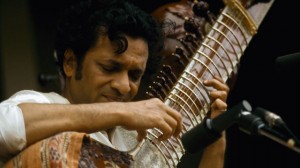 But, many people forget that classical music had prominent improvisation as well. In each concerto for piano and violin, there was always a section for improvisation. In fact Beethoven had duels with improvisation, and Bach did it by request of kings. Unfortunately, many of the improvised sections were then codified and copied later by others, so that in the past 100 years there has been less and less real improvisation in classical music.
But, many people forget that classical music had prominent improvisation as well. In each concerto for piano and violin, there was always a section for improvisation. In fact Beethoven had duels with improvisation, and Bach did it by request of kings. Unfortunately, many of the improvised sections were then codified and copied later by others, so that in the past 100 years there has been less and less real improvisation in classical music.
In classical Indian music, improvisation is central to the ecstatic ragas.
Improvisation of difficult jazz pieces involves complex work with freedom at the same time. The detailed structure and timing must be known to set the framework for the inventiveness. The autobiographical self and the self-reflection brain regions become more active while performing.
Important Brain Regions in Improvisation
 Pre Frontal Cortex – The PFC is a brain region related to self-construct, social function, planning, intention, working memory, and temporal integration. There are three different prominent parts of the PFC
Pre Frontal Cortex – The PFC is a brain region related to self-construct, social function, planning, intention, working memory, and temporal integration. There are three different prominent parts of the PFC
- The ventro-medial, VMPFC, which is linked with the amygdala limbic regions and the cingulate cortex, is especially important for emotional evaluation and regulation. It is related to risk, fear, and decision making.
- The dorso-lateral PFC, DLPFC, which is linked to the occipital, parietal, temporal cortex, and the motor regions to monitor activity and creativity. The occipital, parietal and temporal cortex is related to perception and memory with each primary sensory cortex related to visual, auditory, motor, and somatosensory functions. It is the most important region for intellectual function, planning, organization and regulation.
- The medial PFC is related to self-expression, and self-motivation of thought and action.
Another critical region for improvisation is working memory, which is basically the material that can be actively held in transitory conscious thought. Working memory is critical to creative work, where ideas are held, associations are incorporated, and then elaboration of the creative piece occurs. The sign of an expert is considered increased ability in associations and working memory. The association areas of the brain integrate information from senses and relate them to past memories and experiences.
There are other important regions related to each of these functions, such as the lateral orbital LOFC related to the DLPFC for evaluation.
The Brain Changes in Improvisation
Creative brains reveal complex activity on the MRI
 Recent brain research of instrumental improvisation shows that brain regions that monitor and evaluate are deactivated during improvisation, while many other regions that are involved in self initiated performance greatly increase.
Recent brain research of instrumental improvisation shows that brain regions that monitor and evaluate are deactivated during improvisation, while many other regions that are involved in self initiated performance greatly increase.
The activation occurred in widespread regions related to sensation and motor activity consistent with a performance. Surprisingly language regions were stimulated. The region of the PFC that is related to internal self-expression, the medial PFC, was also activated.
Hip Hop Lyrical Improvisation
In lyrical hip-hop improvisation, called free styling, singers use free floating spontaneous lyrics in rhythm. This improvisation showed similar findings.
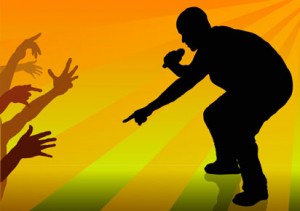 In hip hop free styling there was increased activity in the medial PFC (motivation of thought and action) the classic language areas, and the sensorimotor cortex. In addition there was increase in cerebellum activity, related to motor memory and coordination.
In hip hop free styling there was increased activity in the medial PFC (motivation of thought and action) the classic language areas, and the sensorimotor cortex. In addition there was increase in cerebellum activity, related to motor memory and coordination.
The same deactivation occurred in the supervisory and evaluation regions, the DLPFC and the LOFC.
Other related regions were activated as well. There was increase in the Perisylvian language system, the amygdala (emotions) and increase in cingulate motor area relating to all body regions.
Therefore it was seen that free styling activates motivation, language, mood, and physical action. It also relaxed executive functions, defocused attention and uncensored thoughts.
Brain Rhythms and Listening
The changes noted above were from performers. Studies also showed that alert listeners had the same brain changes, both the activations noted in regions of self motivation and action, sensorimotor, and language; and decreases in the DLPFC, the executive, evaluation centers.
When listening to something, the brain waves synchronize to what we are listening to. The brain naturally synchronizes with incoming oscillations, which helps us hear and focus. In one study a melody contour coupled with the brains activity. Neuronal activity increased and decreased with the melodic contours.
Groups and Interactions
 Another set of studies involved brain imaging with a group of interacting musicians. In playing improvisation back and forth as a communication, these same changes occurred – increases in medial PFC, language cortex including the perisylvian, and the sensorimotor cortex.
Another set of studies involved brain imaging with a group of interacting musicians. In playing improvisation back and forth as a communication, these same changes occurred – increases in medial PFC, language cortex including the perisylvian, and the sensorimotor cortex.
Music performance groups also uniquely combine the activities and the brains of a group of people. This occurs in both instrumental and singing groups. Brainwaves of musicians playing the same notes together were observed to synchronize brain waves.
Improvisation, Meditation, Dreaming, and Hypnosis
Studies of meditation show a definite similarity in the decrease of the same evaluation centers as seen in improvisation. In meditation there is also less sensorimotor activity, and a decrease in sensory information coming from the thalamus, which filters all input. One study of listeners who are meditators showed a heightened ability to listen to music and concentrate.
The findings do show that there is the same decrease in the evaluation regions of the brain, but an increase in the type of easy going monitoring of thinking and feeling that occurs in the default network.
 The default mode network DMN is that part of the brain that operates when we are doing “nothing”, that is, sitting and daydreaming and is connected with self-identity. In fact, the DMN, the part of the brain that operates with non-focused internal thought, including wondering, thinking about others, and memories, changes in meditators to be more able to focus while allowing these processes to continue.
The default mode network DMN is that part of the brain that operates when we are doing “nothing”, that is, sitting and daydreaming and is connected with self-identity. In fact, the DMN, the part of the brain that operates with non-focused internal thought, including wondering, thinking about others, and memories, changes in meditators to be more able to focus while allowing these processes to continue.
Studies of DMN have not been done with those who are expert in improvisation. Improvisation, unlike meditation, does involve a combination of very active behavior, but in addition, the relinquishing of the rigid evaluation that usually goes on. In meditation, there is instead an increased ability to see what the mind is doing without the rigid controls.
In dreaming, a similar pattern emerges with decrease in evaluation centers, but with some major differences. The same decrease of evaluation and control exists, allowing unconstrained cognition. But, the muscles are completely blocked in dreaming. There is very active mental activity, but also less evaluation and control, again turning off the executive regions.
A measure of exceptional performance has been termed high brain integration. This measurable state has included increased coherence of brain waves from different regions as measured by EEG (see post on Brain Oscillations), the volume of alpha waves related to alertness, and general brain efficiency. Using these criteria excellent musicians have placed high in this category, as well as excellent managers, high level athletes, and advanced meditators.
Improvisation Summary
In summary, improvisation activates brain regions of language and sensorimotor skill, and deactivates areas of executive functions, which are also at rest during dreaming, meditation and hypnosis. It is a state of unconstrained creativity with great sensorimotor skill and activity.
What is unusual about improvisation is that it exhibits the unconstrained freedom of these other states, even while strenuous detail is paid to structure and instrumental expertise.
Spirituality And Music
Meditation and prayer have been likened to a form of listening. Since there is no real silence, when quietly listening we hear the sounds of the environment, and the internal sounds of the breath, heart beat and electrical sounds.
 Meditation traditions describe a hierarchy of internal sounds. In these systems, different sounds are correlated with different regions of the brain and spinal cord plexus. Meditation on these neural centers at least increases bodily relaxation in these regions. The meditation traditions state that specific types of meditation experiences are increased using these sounds as techniques which focus on specific nervous system plexus. Unfortunately, there have been no brain studies of this type of activity. But, hopefully there will be soon.
Meditation traditions describe a hierarchy of internal sounds. In these systems, different sounds are correlated with different regions of the brain and spinal cord plexus. Meditation on these neural centers at least increases bodily relaxation in these regions. The meditation traditions state that specific types of meditation experiences are increased using these sounds as techniques which focus on specific nervous system plexus. Unfortunately, there have been no brain studies of this type of activity. But, hopefully there will be soon.
In all types of meditation, sounds are used – sometimes in the form of syllables, words, phrases and prayers usually in a repeated rhythm. If the purpose of meditation is to absorb the active mind so that an experience beyond thoughts can be obtained, then often sounds and a mental image are often both used at the same time.
The power of visualization in learning was described in the previous post related to the multisensory brain. There it was noted that combining visualization with a second concentration such as a physical movement makes the learning much more powerful. In the same way, visualization tied to rhythmic mantra is considered powerful in evoking deeper meditation states. Unfortunately, scientific studies have not reached this far.
Art suggests form with line and color. Poetry suggests form. Music does not have this form. Lines and colors can inspire, fragrance can go even further. But music produces dramatic inspiration, ecstasy, and exultation without form.
Multi Modal Musical Spirituality
Music is able to stimulate ecstasy in a group of people. As with other effects of music noted in the post on neuroplasticity, combining several sensory and motor modalities makes the effects more powerful.
Several different forms of spiritual practice link movements to prayerful singing and mantra. These multi modal practices are noted to have powerful effects. Some traditions use group singing of specific spiritual phrases and mantras as a major form of practice for the community.
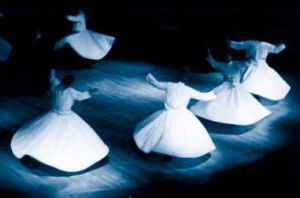 In gospel singing clapping, dancing and other body movements are tied to spiritual singing with dramatic effects.
In gospel singing clapping, dancing and other body movements are tied to spiritual singing with dramatic effects.
The Sufi tradition of spiritual dance, with specific repetitive movements linked to mantras and rhythms, has been noted to stimulate ecstatic experiences. These repetitive rhythmic movements occur in a group dance at the same time as melodic singing and, at times, a gradually increasing tempo. Another practice involves a spinning form of dance with rhythm and mantra and also evokes very strong reactions. All of these utilize very strong multi modal neuroplasticity.
A different form of sound and movement involves physical hatha yoga combined with spiritual music, repetitive mantra or prayer. The combination of music, mantra and the yogic postures can also stimulate spiritual experiences.
Music Improvisation and Spirituality
When our ordinary day-to-day experience of “who we are” is altered through a variety of means, we are able to have extraordinary experiences (see posts on extraordinary experiences – super talents, out of body experience, psychedelics, spiritual). This same type of experience certainly occurs listening to very expert musical improvisation, where the performer and listener lose themselves in the rapture of the music and are transported to great emotional heights.
 As has been stated before in several posts, our actions that produce neuroplasticity can be used for good or for evil. History has shown many examples of people brain washed by despots’ repetitive chanting and saluting while marching into a bad war.
As has been stated before in several posts, our actions that produce neuroplasticity can be used for good or for evil. History has shown many examples of people brain washed by despots’ repetitive chanting and saluting while marching into a bad war.
On the flip side, prayerful mantra expressing spiritual meaning, with the power of melody, rhythm, and movement has been used to stimulate spiritual experience promoting increased compassion and love.
The next post will discuss music, emotion and evolution.